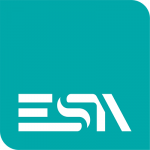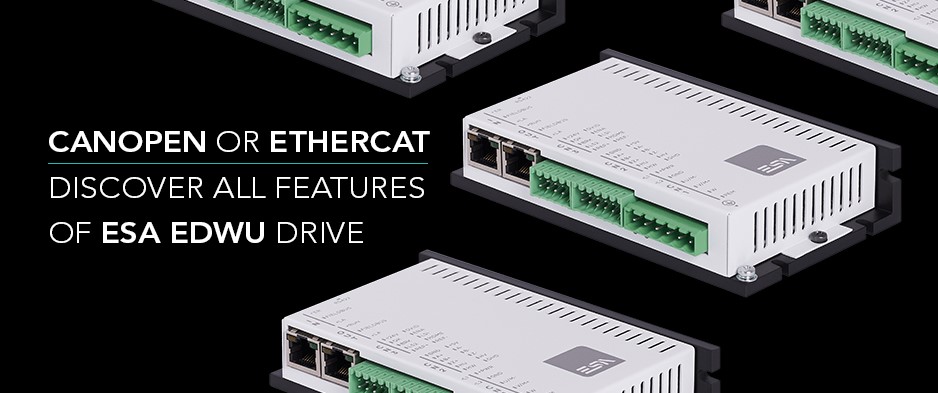The new EDWU servo drive by ESA supports both CANopen and EtherCAT network options to meet the needs of any client. From bandwidth to update frequency, performance and costs, each customer has the option to choose the configuration that best suits them.
CANopen vs EtherCAT: main differences
The CANopen communication protocol is based on CAN (Controller Area Network) and is used to connect complex devices and systems. CANopen networks provide point-to-point connections for service data objects (SDO) and multicast connections for process data objects (PDO).
Among its many advantages for the industrial field, the CANopen protocol provides interconnection capacity thanks to the support of different devices (nodes), reliability and the possibility to expand the system easily and cost-effectively.
Ethernet for Control Automation Technology (EtherCAT) is a technology based on the CANopen protocol and Ethernet. However, unlike normal Internet or network communications, it has been developed and optimized specifically for industrial automation control.
Both EtherCAT and Ethernet use the OSI network model and are based on the same data link and physical layer level. Apart from this, the two networks differ in terms of architecture, since they are designed to perform different tasks. While Ethernet is designed to send large amounts of data through multiple nodes, EtherCAT is a fast and deterministic network that processes data through dedicated hardware and software.
The EtherCAT protocol, in fact, is able to process 1,000 I/O points in 30 microseconds and communicate with 100 servo axes in 100 microseconds. Such speed is possible because the messages are processed in the hardware before being forwarded to the slave. As the data frame passes, the slave devices read the data relevant to them and enter new data into the data stream in real time.
ESA EDWU servo drive
With its new EDWU servo drive, ESA offers a more compact, cost-effective and simple solution to control different motors, from standard brushless to DC servomotors with current range up to 10A.
The real strength of this servo drive, however, is its ease of configuration. Thanks to the Drivewatcher software, you can set the motor parameters with a single digit. Furthermore, the ESA technicians have already set all the ESA engine databases in the firmware and tested all the configurations, so as to guarantee the best drive/motor performance.

